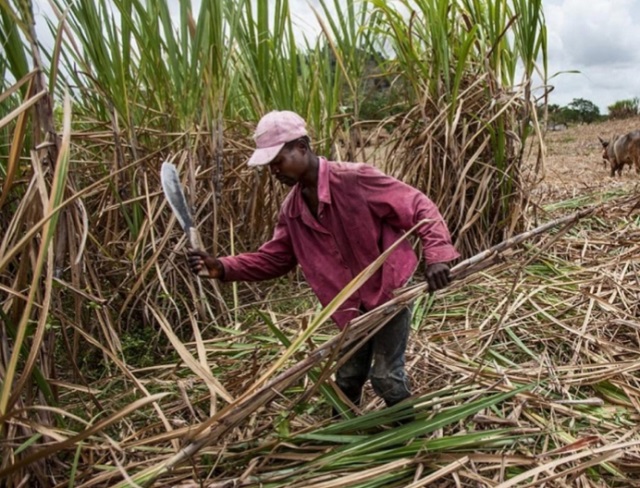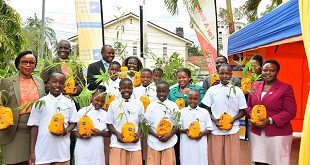
Jinja, Uganda | THE INDEPENDENT | Busoga has the biggest number of sugarcane mills and huge acreage of sugarcane, making use of its fertile soil around Lake Victoria and Lake Kyoga coupled with good rains.
However, the persistent poverty in Busoga continues to raise questions whether cane cultivation is benefiting farmers.
Uganda Bureau of Statistics 2020 figures show that Busoga has 1.2 million poor persons of which 0.4 million are living in food poverty. Food poverty, often referred to as household food insecurity, can be triggered by a crisis in finance or personal circumstances. It encompasses both the affordability of food and its availability within local communities.
According to a study by Economic Policy Research Centre (EPRC), Eastern Uganda particularly Busoga had the largest sugarcane milling capacity at 35%, followed by Central Uganda at 27%, Western at 26% and Northern Uganda, the new entrant in sugar milling at 12%.
EPRC’s senior research fellow, Dr. Swaibu Mbowa released the findings at a virtual conference themed, “Rethinking Sugarcane Governance structures to better address rural poverty and food security.
Dr. Mbowa observed that while sugarcane production has grown from about one million tons in 1961 to about five million tons by 2018, farmers in areas like Busoga continue to live in poverty.
He suggests that farmers may be converting forest land to cane growing, converting more arable land meant for food production or renting out land for cane production.
“Meaning that any gains that we are getting in sugar production in the country is coming from expanded land. The question is where is growth in sugarcane production coming from? We know it is related to expansion of land, no productivity enhancement,” he observed.
Individuals that rent out their land for sugarcane growing are caught in the cycle of debt or end up selling the land to the person who initially rented.
Normally, whoever has rented the land needs it for at least 54 months or three planting seasons. A farmer begins making some profit from the second and third cutting because the first cutting caters for costs of seed, planting, fertilizer among others.
Dr. Mbowa observed an increase in the number of sugarcane mills from about three in 1975 to 33 in 2020. He says increased sugar production and milling would imply better incomes, reduced poverty and increase in food security through food purchases.
‘We are seeing a decline in sugarcane prices. In 2017, a farmer would receive one hundred eight thousand shillings per metric ton. Today, a farmer is picking almost sixty thousand. There is also development which is unwanted of speculators who are gaining access to the permits. And they are no longer buying sugarcane in metric tons. They are buying fields.” added Mbowa
But quoting media reports, Dr. Mbowa said sugarcane prices have declined by 200% in the last five years impacting farmer’s incomes with implication of poverty given that sugarcane is a perennial crop which takes over 18 months to mature.
“We have Kakira as a landmark sugar processing industry in the region. Why is there poverty and food insecurity in the sugarcane growing areas? Now we are moving in the Northern region which is one of the lagging regions with sugarcane. We need to pick lessons with what is going on in Busoga. So that we don’t make the same mistakes in Northern Uganda” said Mbowa.
Why has Busoga remained poor?
Mwine Jim Kabeho, the Uganda Sugar Manufacturers Association chairman said Kakira has over 10,000 registered cane farmers.
“Every month, Kakira pays out 14 billion shillings to the farmers and some districts get a tenth of this as a total income for a year. So why is Busoga poor? We need to find out. We employ 11,600 employees. And every month, we pay 6.5 billion.
According to Kabeho, there is 60% arable land in Busoga region and only 20% is under sugarcane. “So where is the other percentage. What is it doing? We need to look into that. But if we concentrate only on sugar, we may not answer the question” said Kabeho
Kabeho suggests the introduction of zoning of sugarcane according to the available sugar mills in the area. “It will make a record to say that in Uganda, they transport row cane from Busoga to Atiak. It is never there world over. One important thing to do is to have sugar that is sustainable” said Kabeho, also calling on more research into quick maturing sugarcane for better yield and therefore more earnings for the farmer.
“Currently what is causing these problems is that what we recover from the field 60-70 tons per hectare. I think the nucleus estate, they are doing up to 120 tons per hectare. But average farmers, it is 60-70 tons per hectare, imagine that,” he said.
He says tons of sugar made per 100 tons of sugarcane is declining in Uganda. “In Uganda, the average now is seven. For a hundred kilos of sugarcane, you get only seven kilos of sugar. Elsewhere, when you go to reunion, Zimbabwe or down in Brazil, it is 13-14.”
Collapse of the out grower system
Historically, sugar milling was based on an out grower system where by then, big millers like Kakira, Kinyara and Lugazi had nucleus estates complemented by an out grower system.
It is emerging that the newly licensed mills have no nucleus estates and had by 2016 began engaging in sugarcane poaching.
“The new smaller mills that are being licensed have no nucleus estates so they have weakened the out grower system” said Dr. Mbowa
But Michael Mugabira of the Greater Busoga Sugarcane Growers Cooperative Union disagrees that the current crisis with sugarcane growers is in anyway linked to the collapse of the out grower systems.
He says the problem is that the big millers are also engaged in sugarcane growing and therefore competing with smaller farmers.
“My research with India indicates that it abolished the nucleus estate system by law in 1950’s because of the same problem we are suffering. Today, most of the big millers are harvesting own cane. If you are a miller, you mill. Don’t grow cane,” urged Mbaziira.
Kabeho says the sugarcane crisis begun in 2015 as more millers got licensed to mill sugar. “In 2015, there was no sugarcane. The mills had been licensed in one region. The price of sugarcane rose from 60,000-180000. So we started a problem of crushing row cane. All mills made losses.”
Former MP Robert Kasule suggests that for Busoga to get out of the current poverty cycle, there will be need to diversify and find new crops for farmers other than the whole region cultivating one perennial crop.
“Sugarcane is a low value crop. And we have to be very careful with low value crops because their home is plantations. Not everybody in the region can grow sugarcane” said Kasule.
*****
URN
 The Independent Uganda: You get the Truth we Pay the Price
The Independent Uganda: You get the Truth we Pay the Price



